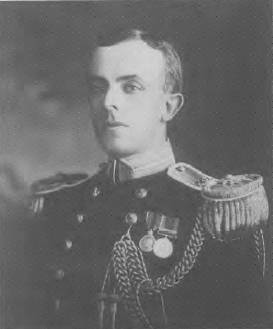- Author
- Rivett, Norman C
- Subjects
- Biographies and personal histories
- Tags
-
- RAN Ships
- None noted.
- Publication
- June 1997 edition of the Naval Historical Review (all rights reserved)
“… a really capable officer,” NHR Vol. 17 No. 3 1996 (September 1996).

I have long considered that the contribution made by Staff Paymaster (later Fleet Paymaster) Eldon Manisty RN, to the Commonwealth Naval Forces and the Royal Australian Navy, as a member of the Navy Board from the 1st March 1911 until March 1914 has never been fully appreciated nor his true ability recognised.
Fortunately the latter was not a Royal Navy failing, as the following brief account of his life and service career indicates.
Eldon Manisty was born at Tynemouth, Northumberland in 1876, the eldest son of Henry Clayton Manisty.
He was educated at Barnard Castle School County Durham and entered the accountant branch of the Royal Navy in 1894.
After service in the China War of 1900 (Boxer Rebellion) he was especially promoted to Paymaster for his services, a gain in seniority of four years.
Paymaster Manisty served as Secretary to Admiral Sir Reginald Henderson at the Coastguard and Reserves Office from 1905 to 1910. He was called to the Bar by Gray’s Inn, in 1908.
When Admiral Sir Reginald Henderson came to Australia in 1910 to advise on the constitution of the Commonwealth Navy he was accompanied by Staff Paymaster Manisty who subsequently was appointed as Finance and Civil Member and Naval Secretary of the restructured Board at Melbourne.
During his term of office he married (1911) Florence Henderson, daughter of David Henderson McCathie of Sydney, N.S.W., and was promoted to Fleet Paymaster.
On completion of his appointment in March 1914 he returned to England and served as Secretary to Rear Admiral Rosslyn Erskine Wemyss who commanded a cruiser squadron in the Western Patrol. This squadron provided the close escort for the first Canadian Troop Convoy to Europe.
On 15 May 1917, a convoy committee was nominated to devise a programme for the operation of a general convoy system. As a consequence of the report submitted by the committee on the 6th June, a Convoy Section was formed at the Admiralty with Fleet Paymaster H.W.E. Manisty appointed as organising manager of convoys, (1917-1919). As such he was responsible for the assembly of all convoys and vessels.
Admiral of the Fleet Viscount John Jellicoe in his book “The Crises of the Naval War”, (1920) refers to “the quite exceptional skill” with which this work was carried out.
Rare praise indeed from one who failed to appreciate at the time the value of the convoy system.
For his services H.W.E. Manisty was created a CMG in 1916 and a C.B. (Civil) in 1919.
After World War I, Manisty was appointed Superintendent of the Secretaries Course, Portsmouth 1922-25, then Deputy Judge Advocate of the Fleet 1925-27, followed by an appointment as Port Accountant Officer at Portsmouth 1927-1929.
In 1929 he was promoted to Paymaster Rear Admiral and appointed Paymaster Director-General of the Navy. 1929-1932. He was advanced to K.C.B. (mil) and retired in 1932.
In 1936 Sir Eldon made a broadcast from the B.B.C. London, on the occasion of the Royal Australian Navy’s Twenty-Fifth Anniversary recalling how he had witnessed the entry of the first Australian Fleet Unit into Sydney on the 4th October 1913.
Paymaster Rear Admiral Sir Eldon Manistry was recalled to Duty from 1939-1946 and performed similar duties to those he carried out in WWI, as Head of the Convoy Section, Ministry of War Transport from 1939 to 1942.
He died on Friday 26th August 1960 leaving two sons, one of whom, Peter, had retired from the Royal Navy as a Captain in 1958.




